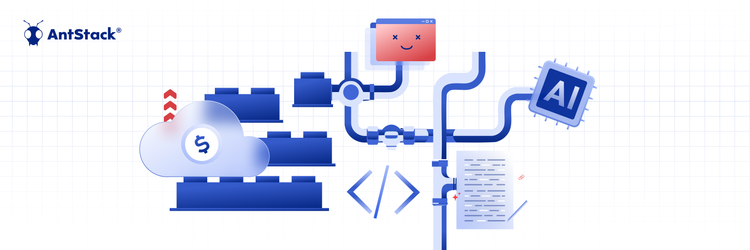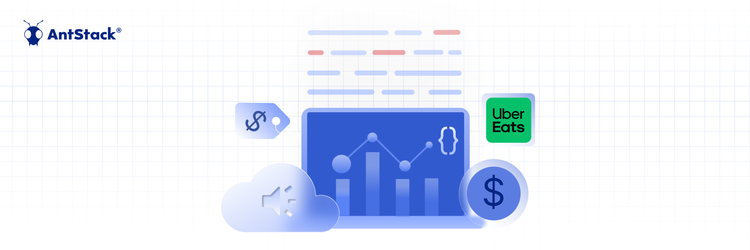Rethinking Cloud Spend: Modernization Over Short-Term Cuts
Last quarter, I watched a major QSR brand launch a nationwide promotion, one that never quite made it to the customer. In Chicago, it didn’t show up on kiosks. On Uber Eats, the combo was missing altogether. And in thousands of locations, the offer simply didn’t exist.
This isn’t a one-off. I’ve seen this story play out more times than I can count. Not because the idea was wrong, but because the system was too slow to keep up.
For most QSRs, pricing logic is buried inside backend code, tightly coupled to systems, and brittle to update. Every change, a seasonal bundle, a city-specific discount, or a new upsell flow becomes an engineering problem, not a business lever.
This lag isn't just frustrating. It’s expensive.
In an environment defined by real-time consumer expectations, pricing agility is not a nice-to-have. It’s a core business capability.
Pricing Can’t Stay Trapped in Code
The traditional approach to pricing is fundamentally flawed. This model was built for a slower era. One where promotions could be planned weeks in advance, tested in one channel, and deployed in stages.
But that era is gone, and I’d argue it’s been gone longer than most systems are willing to admit. When every digital surface, mobile, kiosk, POS, and delivery is a storefront, pricing needs to be as fluid as consumer behavior. That means:
- No more code deployments to update prices or bundles
- No more manual syncs across platforms
- No more delays between strategy and execution
The Case for Dynamic Pricing Architecture
Real-time pricing isn’t a feature you bolt on. It’s a foundation you build.
This requires three foundational shifts:
Business teams can experiment directly without engineering bottlenecks when pricing becomes configuration-driven.
Event-driven propagation ensures every endpoint is in sync, without manual orchestration.
With schema versioning and rollback support, experimentation becomes a low-risk, testable, and reversible process.
Why Serverless Enables This
The only way to deliver this level of real-time coordination without creating overhead is to go serverless.
A serverless architecture built around event-driven services (like AWS EventBridge and Lambda) allows for:
- Instant scale during high-load pricing updates
- Fault-tolerant rollouts across multiple geographies
- Pay-per-use pricing that aligns cost with value delivered
More importantly, it removes infrastructure management from your roadmap, so your teams can focus on revenue strategy, not system reliability.
Regional Price Variability
You want to adjust item pricing based on regional differences in input costs or competitor positioning. However, your current infrastructure applies pricing rules globally or requires conditional logic embedded directly into the application layer. And implementing differential pricing takes engineering effort and creates risk across channels.
With a centralized rule engine exposed via APIs, pricing becomes data-driven and decoupled from deployment cycles. Business teams define city, region, or store-level pricing rules, while propagation across systems remains automated and consistent.
Contextual Add-ons and Time-Bound Bundles
You need to roll out a limited-time breakfast bundle in metro locations or upsell an add-on item only during lunch hours. These promotions require logic forks in your POS system, updates to your kiosk and mobile app menus, and coordination with third-party delivery partners.
Using serverless compute (AWS Lambda) and event-driven messaging (Amazon EventBridge), these pricing updates can be published once and fanned out to all subscribers. Each downstream system processes the event according to its context, ensuring a synchronized rollout without engineering intervention.
Campaign-Level A/B Testing with Rollback Support
You’re experimenting with two different discounting models in parallel, 10% off in Phoenix, a free item in Atlanta, and want to monitor performance in real-time, with the option to roll back underperforming variants.
Schema-based pricing definitions with version control enable safe experimentation. Rule versions are tagged and tested independently. Rollbacks are non-destructive, and changes are observable at every stage. All without requiring redeployment or impacting base functionality.
What the Shift Looks Like in Practice
Here’s how it plays out for QSR leaders:
- Your brand appears consistently everywhere. Promotions land in real time, and strategy isn’t slowed by system limitations.
- Every city becomes a learning lab, with successful outlets scaling faster all without engineering tickets.
- Teams stop burning cycles on brittle sync logic. Pricing becomes a safe, testable surface, not a codebase liability.
Ultimately, this shift isn’t about faster updates. It’s about smarter decisions.
When pricing becomes real-time, granular, and fully decoupled from legacy constraints, QSRs unlock a new kind of operating model: one where every offer is measurable, every campaign is reversible, and every insight is timely.
This is the path forward, not just to speed, but to pricing intelligence at scale.









